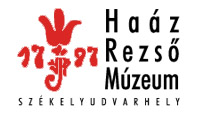Kovács Petronella (szerk.): Isis - Erdélyi magyar restaurátor füzetek 14. (Székelyudvarhely, 2014)
Mester Éva: Nagyméretű üvegfestmények "in situ" vagy műtermi restaurálása
of the decomposition of organic materials. Ideally, the cleaning and conservation of finds would need to begin immediately. However, excavation sites are not very suitable for this. It frequently happens that large numbers of leather artefacts are found all of a sudden; their recovery, documentation, transportation to a conservators’ studio, and conservation require special training on the part of conservators. During the recovery process, it is important to protect the leather from physical and microbiological damage, and, as much as possible, to preserve its moisture content until such time as its treatment begins. If an artefact consists of very delicate or multiple pieces, it is appropriate to raise it together with the earth around it. In the past, it was general practice to soak finds which were fragile in a solution of synthetic compounds. Substances which served to consolidate helped keep fragments in one piece, but impeded investigations later on regarding the techniques and materials used to make the artefact. Nowadays, artefacts are protected from falling apart by means of physical support, padded wrappings, and gentle moving. In locations which are wet or waterlogged, only vegetable-tanned leathers are to be reckoned with, while in crypts that are dry or moderately moist leathers tanned using alum can also be expected. The microclimate of crypts favours microorganisms, for which decomposing organic remains provide nourishment. Hence, at the beginning of the work microbiological investigations need to be made; so, too, does a survey of mould activity. It is recommended that the lifting out of finds be performed in protective clothing, with the use of spore-proof masks. In case of the unexpected discovery of leather in large amounts, especially waterlogged leather, there is a need for measures which have been well thought through. At the location where conservation is to take place, preparations need to be made for the reception and safe storage of the artefacts, as well as for the evaluation and documentation of their condition, and for the taking of samples necessary for later investigations. The scheduling of tasks is essential, as is the division of finds into smaller groups on the basis of their condition and their constituent materials. Soil, vegetable matter, and corpse remains are removed means of cleaning mechanically. In the case of a strong presence of mould, dry cleaning must be omitted, in order to guard against spores and mycotoxins getting into the air. The deterioration of finds can be prevented by spraying with a 70% solution of isopropyl alcohol or a 70% solution of ethyl alcohol, but special care needs to be given to their treatment subsequently. After cleaning mechanically, remaining soil and water-soluble salts are removed from vegetable-tanned leathers using water (soaking or spraying). Alum-tawed leathers, which are sensitive to water, should be cleaned using swabs moistened at the very most with an emulsion containing organic solvent, while archaeological parchment and rawhide finds should be cleaned dry. After wet treatments, leathers are always drained of water and thoroughly blotted, so that solvents used in the following step are not diluted. When necessary, those salts which cause stiffness in the leather and which are insoluble in water are removed using chemical substances (complexing agents, ion-exchange resins), as are harmful corrosion products. This is followed by thorough rinsing. During the conservation work which follows next, substances are introduced among the fibres of the leather which, after drying, prevent the sticking together of the fibres and stabilise the amount of water in the leather. For this, polyhydric alcohols with hygroscopic properties (polyethylene glycols or glycerol are used. Following conservation, finds are dried out, the purpose of which is the removal of excess water in such a way that the leather preserves its shape and suppleness in the best way possible. The choice of method used depends on the condition of the find and on the possibilities open to the conservator. Mostly, two methods are used: freeze-drying (currently considered the best method) and drying at room temperature, in controlled conditions. In fortunate cases, artefacts for use could be reassembled in their earlier fonn from the finds that had been conserved. However, this was only possible when every essential part of an object had come to light, and when the leathers were sufficiently supple and strong to allow re-sewing. When this was not possible, the most important goal during the work was the preservation and interpretation of the marks and data conveyed by the fragments, because even the smallest piece of leather containing traces of sewing can convey important information with regard to the production technique used. The study touches upon the possibilities of re-assembling footwear fragments of different levels of preservation, from complete re-sewing to attachment to a support using non-msting pins. Andrea Várfalvi Possibilities for the investigation and conservation of archaeological textiles Different types of damage affect archaeological textiles in different ways. Physical damage appears in the form of wear, creasing, tearing, and loss of shape. Breakdown of chemicals brings about changes of colour and also fading. Rodents, larvae, insects, and microorganisms can cause changes that are biological in origin, in the form of colour changes, fading, and missing fabric. Alongside the making of accurate documentation, the most important task when finds are discovered is the fixing of weakened fabric. In order to avoid any further deterioration of the finds, the environmental circumstances they experienced prior to their excavation must be ensured until treatment can be started. In order to interpret and get to know textile-based finds, it is necessary to perform different investigations. With the help of these, the organic and inorganic materials in the finds, along with contaminants, can be identi144
